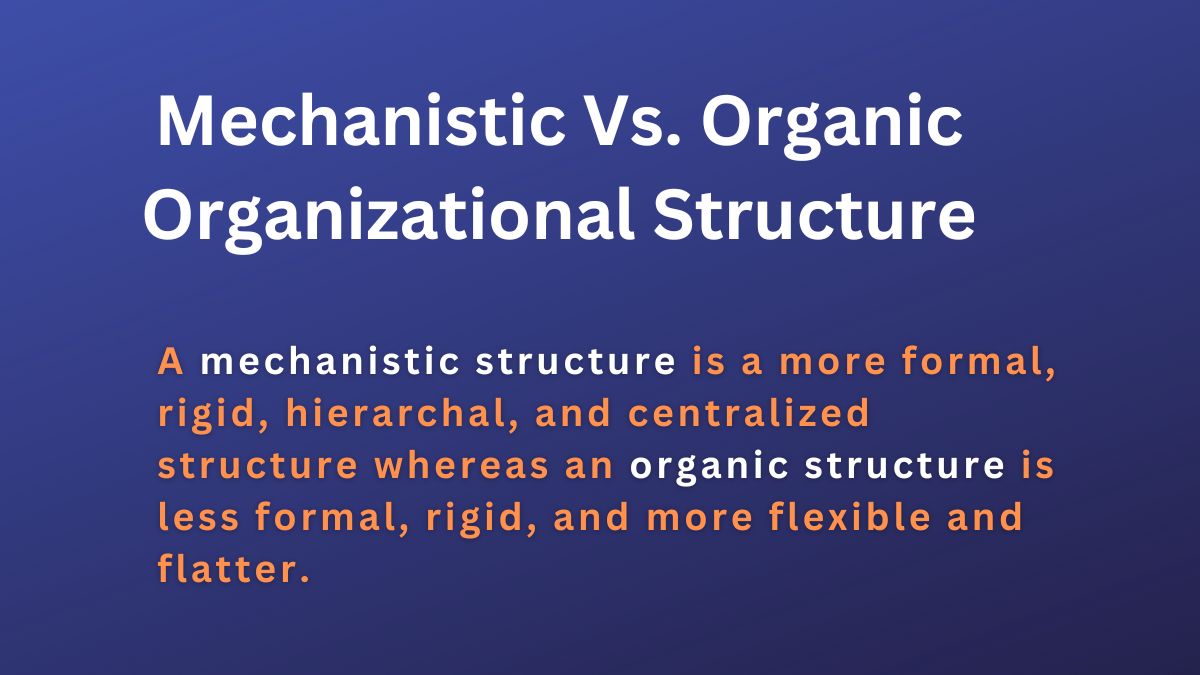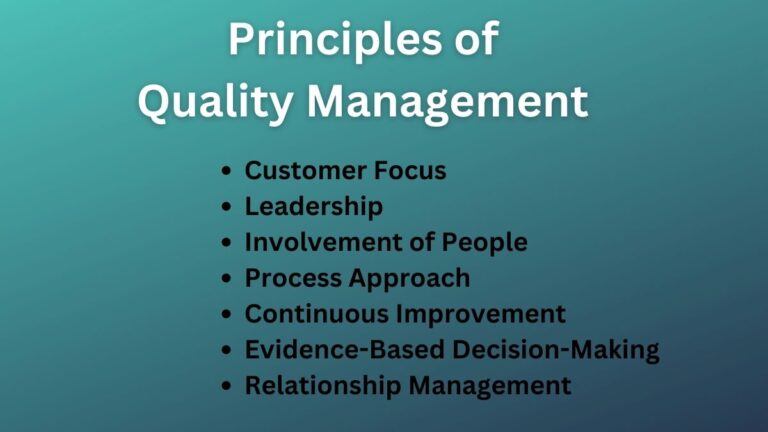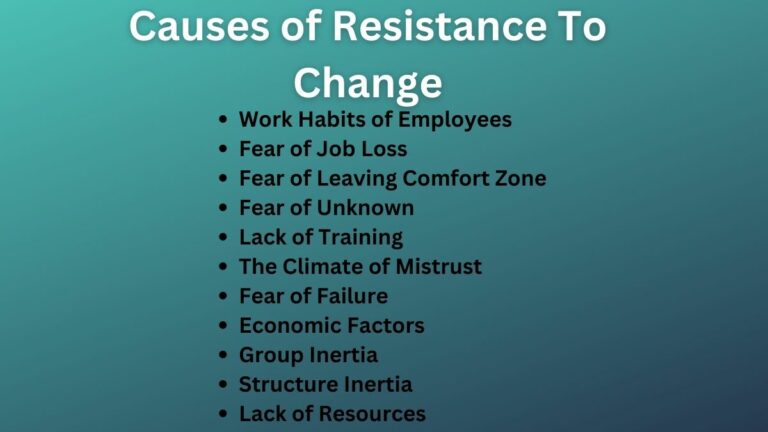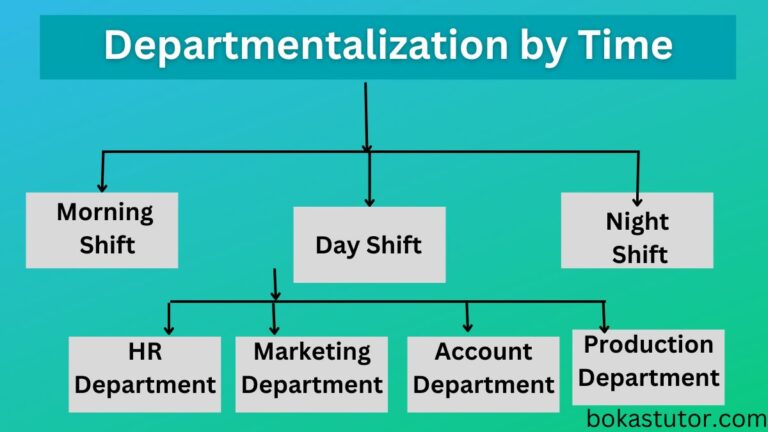Mechanistic Vs. Organic Organizational Structure: 7 Key Differences
Mechanistic Vs Organic Structure
Mechanistic and organic organizational structures are the two most common organizational structures. Mechanistic structure refers to traditional types of organizations. Whereas, the organic structure refers to modern types of organizations.
Both the organic and mechanistic structures have been practiced in management practice. Both differ from each other and both have their benefits and drawbacks.
Let’s understand the concepts of mechanistic and organic organization and the differences between them.
What is a Mechanistic Organizational Structure?
The mechanistic structure is a traditional form of organizational structure that has a rigid structure, centralized decision-making, greater formality, and standardized control systems. This structure is beneficial for achieving efficiency in the organization.
The mechanistic structure treats men i.e. employees as a machine and assumes their only task in the workplace is to convert the input into output. This structure works well in a simple, stable, and predictable environment.
A clear hierarchy of authority is seen in mechanistic organizations. In which the top position holds the highest authority and the entry-level position has the least. A clear path for communication is established and a well-defined chain of command is.
Characteristics of a mechanistic structure:
- Views an organization as a machine that converts the input into output with certain processes.
- Assumes organizations operate in stable, simple, and predictable environments.
- Focus on increasing efficiency through specialization and standardization of work.
- Formal hierarchy of authority.
- It assumes that there can be one best way of doing jobs and solving each problem with greater uniformity.
What is Organic Organizational Structure?
Opposed to the mechanistic structure is the organic structure. This structure is more flexible, less formal, flatter, less hierarchal, and more decentralized. The communication flows horizontally and employees are given autonomy to make decisions at their work levels.
It is more humanistic than a mechanistic organization. The organic structure assumes a rigid structure and more formality does not well work in a dynamic environment. It assumes the best way to do tasks in a modern business setting is by being flexible enough to adapt to the changes.
Related: Human Relations Theory
The organic organization is beneficial for achieving innovativeness in the operations as it is not rigidly structured. As the structure allows the organization the flexibility to deal with sudden environmental change and a variety of variables, it is utilized in dynamic, unstable situations where the firm must quickly adapt to change.
Characteristics of organic structure:
- Assumes human interactions in the workplace are important to satisfy employees.
- Socio-psychological study of people helps to achieve organizational effectiveness.
- Situational changes can be accepted and managed effectively.
- Jobs are redesigned to empower employees.
- The structure is lean, flat, and less hierarchal.
Difference Between Mechanistic and Organic Structure
The following are the key points that are worth notable to differentiate between the organic and mechanistic organizational structures.
Concept
The mechanistic structure can be defined as the more formal, rigid, hierarchal, and centralized structure where a network of positions corresponds to tasks. Typically each person corresponds to one task.
Similarly, the organic organizational structure can be defined as a more modern, less rigid, less formal, and more flexible structure. It is a network of persons or teams. People work in different capacities simultaneously and over time.
Related: Team Organizational Structure
Specialization
The mechanistic structure offers of benefits of specialization. It focuses on individual specialization in one task. On the other hand, the organic structure focuses on joint specialization as employees work together and coordinate tasks.
Hierarchy Structure
In a mechanistic organization, there is a well-defined hierarchy of authority that ensures simple integration mechanisms. Whereas, in an organic organization, there is no such hierarchy of authority instead task forces and teams integrate creating complex integration mechanisms.
Decision-Making
Mechanistic structures are based on centralized decision-making and organic structures are based on decentralized decision-making.
Communication
Generally, vertical communication is in mechanistic organizations. A written means of communication is followed. Whereas, in organic organizations, there is lateral communication in general. And, normally, a verbal means of communication is followed.
Operating Procedure
In mechanistic organizations, there are standard operating procedures. Extensive use of rules and regulations. On the other side, in organic organizations, there are unpredictable work processes. Mutual adjustment and face-to-face contact are used for coordination.
Status
In a mechanistic structure, there is a formal status in the organization based on the size of the empire. And, in an organic structure, there is informal status based on perceived brilliance.
Read Next: Types of Organizational Structures
Sajan Kushmi is a content writer with more than 4 years of experience. He holds BIM Degree. He write on the topics related to Management, Marketing, and Entrepreneurship.







Thank you
Very understandable.. Thank you, this was very helpful to me!
You are welcome.